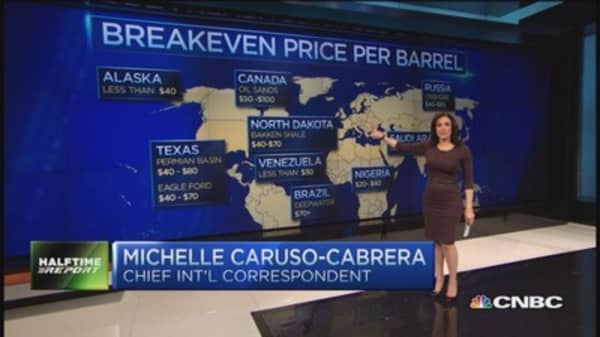This is not a great time to be an oil producer.
Extending a slide that began in June, crude prices have fallen by more than a third, and it's not clear how much lower they're heading. The drop has taken a multibillion-dollar bite out of the world economies that depend heavily on oil production.
It's also created a windfall for countries, companies and consumers that use all that oil.
The latest evidence came in Friday's trade data, which showed that U.S. oil imports—measured in dollars—fell in October to their lowest levels since November of 2009. The drop is being fueled by a boom in domestic energy production, falling demand due to improved efficiency and the recent plunge in oil prices.
Read MoreAs US energy grows, so does US 'power'
Each $10 drop in the global benchmark price amounts to about $330 billion—or about 0.4 percent of world GDP, according to Capital Economics economist Andrew Kenningham. So if oil prices hold their losses next year, he figures that about 1.2 percent of global GDP will shift from oil producers to consumers.





